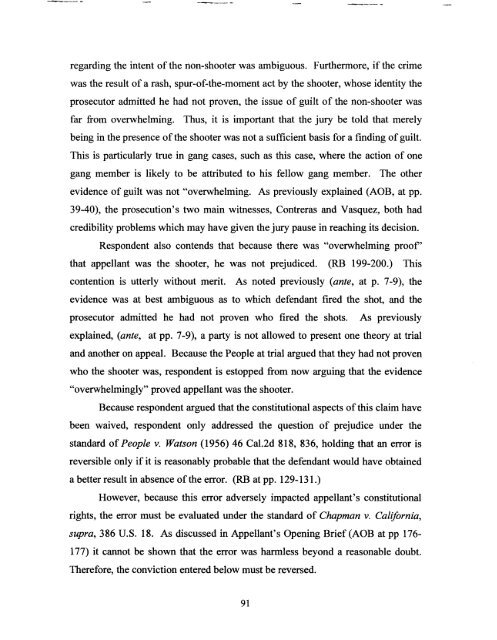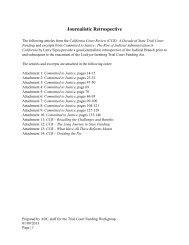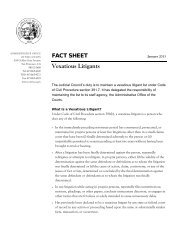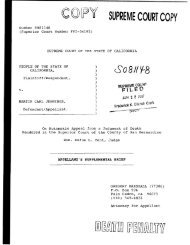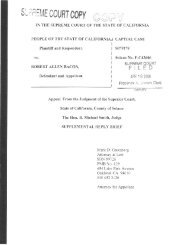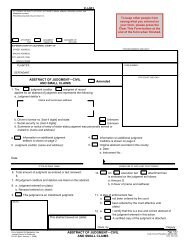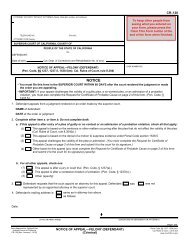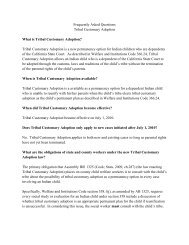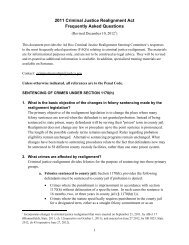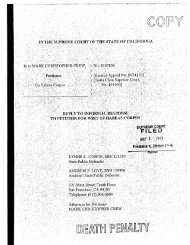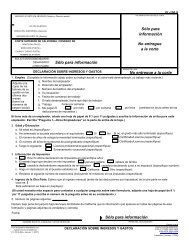Appellant, William Satele, Reply Brief - California Courts - State of ...
Appellant, William Satele, Reply Brief - California Courts - State of ...
Appellant, William Satele, Reply Brief - California Courts - State of ...
You also want an ePaper? Increase the reach of your titles
YUMPU automatically turns print PDFs into web optimized ePapers that Google loves.
egarding the intent <strong>of</strong>the non-shooter was ambiguous. Furthermore, ifthe crime<br />
was the result <strong>of</strong> a rash, spur-<strong>of</strong>-the-moment act by the shooter, whose identity the<br />
prosecutor admitted he had not proven, the issue <strong>of</strong> guilt <strong>of</strong> the non-shooter was<br />
far from overwhelming. Thus, it is important that the jury be told that merely<br />
being in the presence <strong>of</strong>the shooter was not a sufficient basis for a finding <strong>of</strong>guilt.<br />
This is particularly true in gang cases, such as this case, where the action <strong>of</strong> one<br />
gang member is likely to be attributed to his fellow gang member. The other<br />
evidence <strong>of</strong> guilt was not "overwhelming. As previously explained (AOB, at pp.<br />
39-40), the prosecution's two main witnesses, Contreras and Vasquez, both had<br />
credibility problems which may have given the jury pause in reaching its decision.<br />
Respondent also contends that because there was "overwhelming pro<strong>of</strong>'<br />
that appellant was the shooter, he was not prejudiced. (RB 199-200.) This<br />
contention is utterly without merit. As noted previously (ante, at p. 7-9), the<br />
evidence was at best ambiguous as to which defendant fired the shot, and the<br />
prosecutor admitted he had not proven who fired the shots. As previously<br />
explained, (ante, at pp. 7-9), a party is not allowed to present one theory at trial<br />
and another on appeal. Because the People at trial argued that they had not proven<br />
who the shooter was, respondent is estopped from now arguing that the evidence<br />
"overwhelmingly" proved appellant was the shooter.<br />
Because respondent argued that the constitutional aspects <strong>of</strong>this claim have<br />
been waived, respondent only addressed the question <strong>of</strong> prejudice under the<br />
standard <strong>of</strong> People v. Watson (1956) 46 Ca1.2d 818, 836, holding that an error is<br />
reversible only if it is reasonably probable that the defendant would have obtained<br />
a better result in absence <strong>of</strong>the error. (RB at pp. 129-131.)<br />
However, because this error adversely impacted appellant's constitutional<br />
rights, the error must be evaluated under the standard <strong>of</strong> Chapman v. <strong>California</strong>,<br />
supra, 386 U.S. 18. As discussed in <strong>Appellant</strong>'s Opening <strong>Brief</strong> (AOB at pp 176<br />
177) it cannot be shown that the error was harmless beyond a reasonable doubt.<br />
Therefore, the conviction entered below must be reversed.<br />
91


